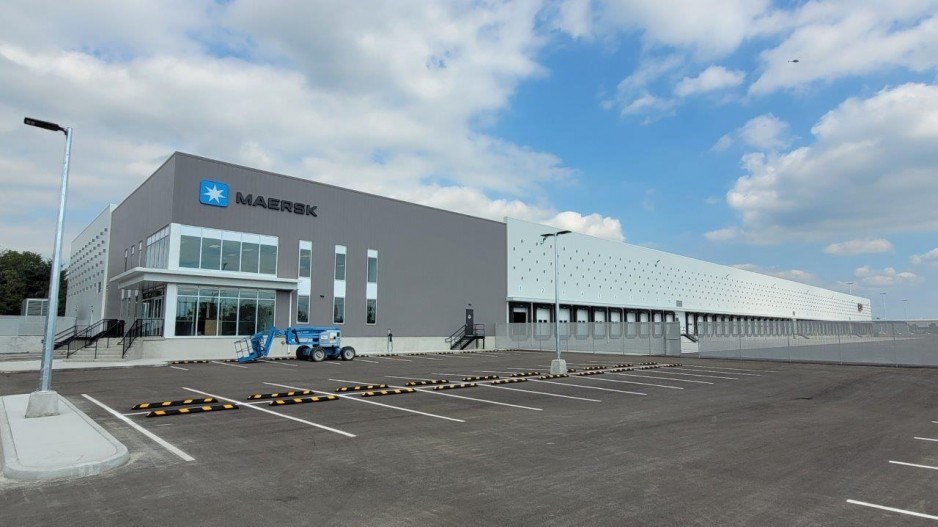The world’s largest container shipping company is teaming up with Canada’s second-largest railway to provide what the two companies believe will be increased container shipping efficiency through the Port of Vancouver and reduced container shipping congestion along North America’s West Coast.
Maersk (CPH:MAERSK-B) unveiled its new Pacific Transload Express (PTE) facility today in conjunction with Canadian Pacific Railway Ltd. (TSX:CP) to provide what they say will be reduced port costs and greater speed and agility in dealing with shipping demand fluctuations.
While the PTE’s ability to transload 20-foot international containers into the 53-foot trailers used by North American railways is projected to provide overall cost savings, the 117,000-square-foot, 103-door facility is designed to make Asia/Pacific Northwest (PNW) supply chains more resilient, flexible and cost-effective.
CP president and CEO Keith Creel noted that the new transloading facility will also reduce the local supply chain’s carbon footprint by taking more trucks off the road and leveraging the benefits of moving goods by rail. The new transloading hub will remove an estimated 100,000 truck trips per year in the Metro Vancouver area.
Extreme congestion at major North American transpacific container ports since the second half of 2020 has seriously compromised supply chain reliability and added to goods movement delays, costs and uncertainty.
According to Maersk, goods flowing through the facility will be retail and lifestyle consumer items that need a quick response to market demand fluctuations. Such goods will account for 80% to 90% of PTE volumes; auto parts will make up the remaining 10% to 20% of products handled at the container terminal, which is on CP land adjacent to the company’s Vancouver intermodal facility in Pitt Meadows.
“Bringing this new supply chain asset into play today marks an important new Asia/PNW gateway chapter for customers looking for faster order fulfillment achieved through integrated logistics,” Maersk Canada president Omar Shamsie said.
CP will shuttle containers by rail from Vancouver’s three major container terminals to the facility, which is expected to help cut current Asia to North America goods movement times.
“We can help our customers reduce the transit time variation from 35 to 75 days door-to-door to having the cargo in consistently at 35 to 40 days,” said Erez Agmoni, head of Maersk North America’s warehousing and distribution product development. “This helps customers create a more precise and predictable supply chain that helps them reduce safety stock, saving money on inventory storage costs with this transload solution. We are the first and only company providing this solution in the market."
That market has been good to Maersk of late. The company’s overall second-quarter 2021 revenue was up 60% to US$14.2 billion, compared with the same quarter in 2020. Its container shipping earnings, buoyed by increased freight rates and higher volumes, jumped to US$3.6 billion in Q2 2021 from US$552 million in Q2 2020.
PTE construction was completed in August, and the first containers arrived at the facility earlier this week.
With files from Timothy Renshaw
[email protected] twitter.com/jhainswo
[email protected] @timothyrenshaw




